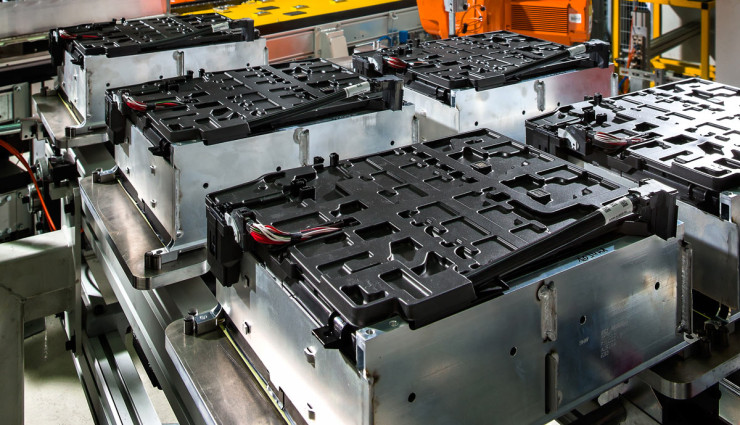
Source: Bing
Recently, Honda Automobile Co., Ltd. (Honda) firstly in the global established the nickel-metal hydride battery (NI-MH battery) recycle system for hybrid electric vehicles (HEV). Honda uses the rare earths, which is extracted from NI-MH battery used for HEV, as the material of NI-MH battery again.
Such a recycle system has drawn attention and discussion within the industry.
Along with the exhaustion of petroleum and the worsening environmental problems, alternative energy vehicles are becoming the popular automobiles in the future. Power batteries like li-ion battery and NI-MH battery, with the advantages of high energy density, long working life and pollution-free, have become the first choice in battery for alternative energy vehicles.
However, the resources restriction of nickel, cobalt and rare earth, and the pollution caused by the wasted power batteries have made the recycle of power batteries needed.
In 2010, about 23,000 tonnes of metallic nickel, 4,000 tonnes of metallic cobalt, and 8,000 tonnes of mixed rare earths were consumed in China’s battery industry, according to CCM’s research. The average lifespan of power batteries were about 3 years to 8 years. A great deal of failed power batteries is greatly influencing the resource restriction and the environment.
In 2020, the wasted power batteries of alternative energy vehicles in China will reach to 120,000 tonnes – 170,000 tonnes, according to China Automotive Technology & Research Center.
During National People's Congress and Chinese People's Political Consultative Conference, some officials stated that the lifespan of the first batch of power batteries was around five years; thus, in the second half of 2016, these power batteries are failing in usage.
As the major valuable metals for power batteries, nickel, cobalt and rare earths are actually stored in the power batteries. Take NI-MH power battery as an example, the content of nickel is 30% to 50% in the wasted NI-MH power batteries; cobalt, 2%-5%; and rare earths, 5% to 10%, which are of great economic value to recycle the resources.
In addition, the power battery products are very organized in its types and specifications, stable in its nonvolatile content and easy to manage in the market, which are all beneficial for the waste power battery recycling.
As for li-ion power battery, the content of cobalt is 5%-15%; li-ion, 2%-7%; and nickel, 0.5%-2%. In 2050, the demand of metallic li-ion will reach to 40 million tonnes while the storage of metallic li-ion in the global is only about 45 million tonnes, according to CCM’s research. In China, the storage of li-ion only accounts for 10% of the total storage. Therefore, the recycle of power batteries are of great importance to China’s development of alternative energy vehicles.
It is forecasted that the recycle of power batteries would become an emerging industry. The recycle of wasted power batteries can be beneficial for not only the environment, but also the economy and society.
In fact, at the end of 2015, the Chinese government had already released the draft for opinion on Technical Policies on the Recycle and Reuse of Power Batteries for Electrical Vehicles, which pointed out that the use of wasted power batteries, shall obey the rules of “hierarchical-recycling” first, and re-utilization later, to improve the utilization of resources.
The so called “hierarchical-recycling” aims to make full use of the wasted power batteries. When the capacity of used power batteries no long meet the need of the alternative energy vehicles, the power batteries could be used in alternative energy storage stations, low-speed electric vehicles and distributed power source.
Insiders were worrying about the recycle of power batteries before, especially the harmless treatment of wasted power batteries. However, some enterprises sniffed off the business opportunities. Some even stated that here comes the age of hierarchical-recycling.
Wan Ke, minister of China’s Ministry of Science and Technology, stated that, it was not necessary to dispose power batteries, especially li-ion batteries, after being used. They could be hierarchical-recycled. China should speed up the establishment of recycling system of power batteries and construct the whole industrial chains of power batteries recycling.
“According to previous experience, the wasted power batteries could be used for quite a long time when they are applied to the storage of wind energy and solar power,” said Wan.
You could search battery in CCM’s Online Platform for more information about battery market in China.
About CCM:
CCM is the leading market intelligence provider for China’s agriculture, chemicals, food & ingredients and life science markets. Founded in 2001, CCM offers a range of data and content solutions, from price and trade data to industry newsletters and customized market research reports. Our clients include Monsanto, DuPont, Shell, Bayer, and Syngenta.
For more information about CCM, please visit www.cnchemicals.com or get in touch with us directly by emailing econtact@cnchemicals.com or calling +86-20-37616606.
-
Average:
-
Reads(2726)
-
Permalink


 Back to Cnchemicals.com
Back to Cnchemicals.com 
